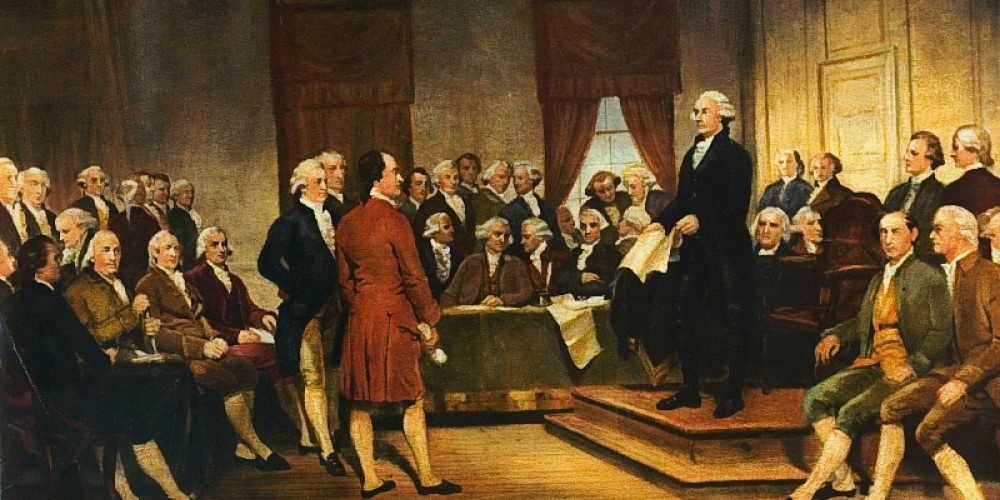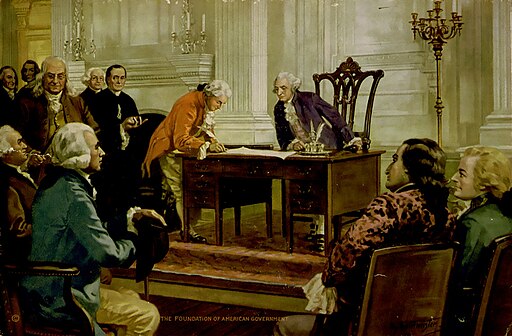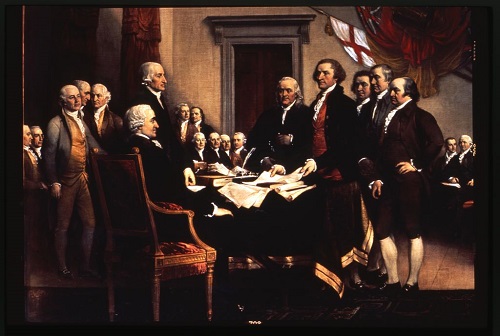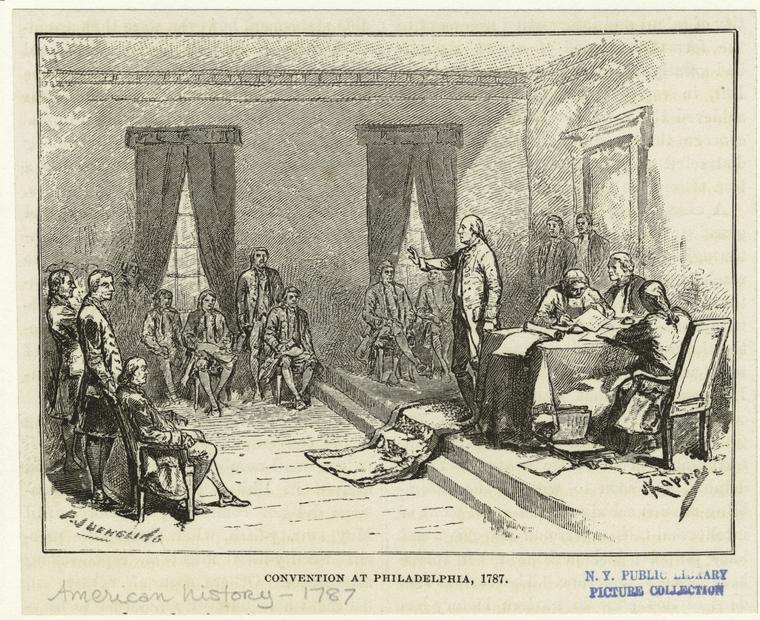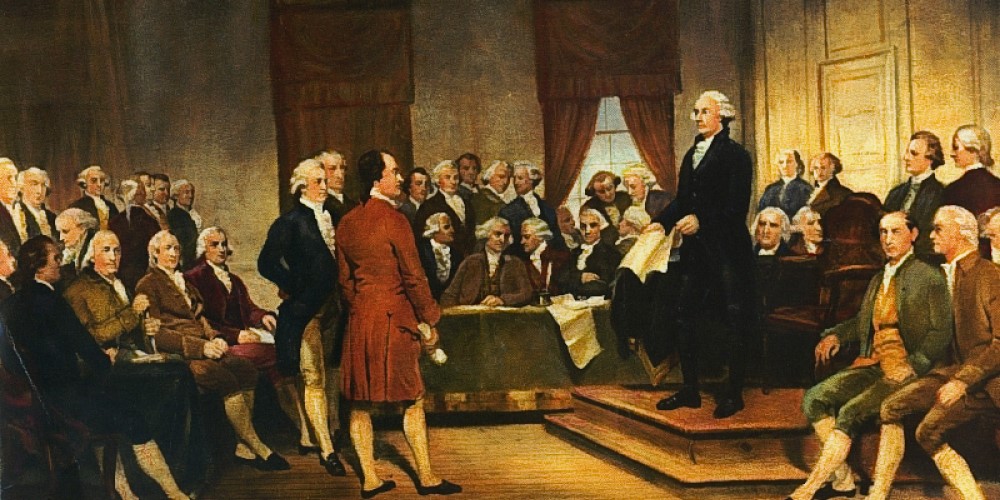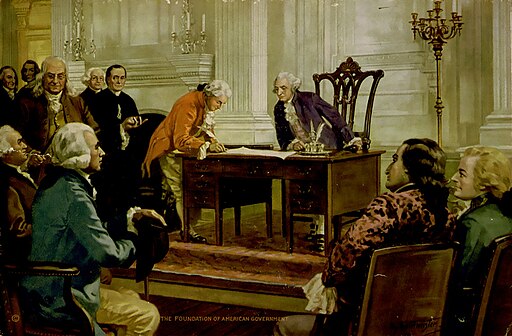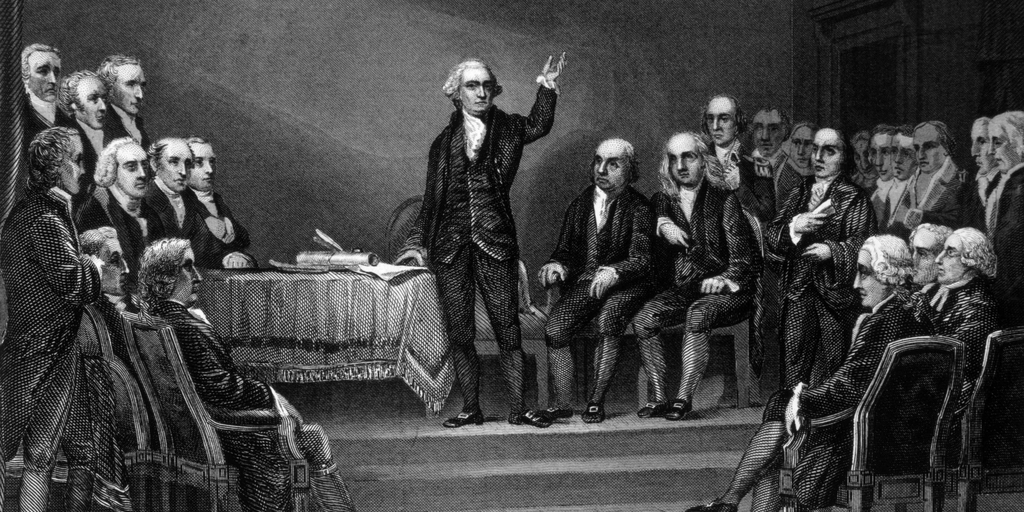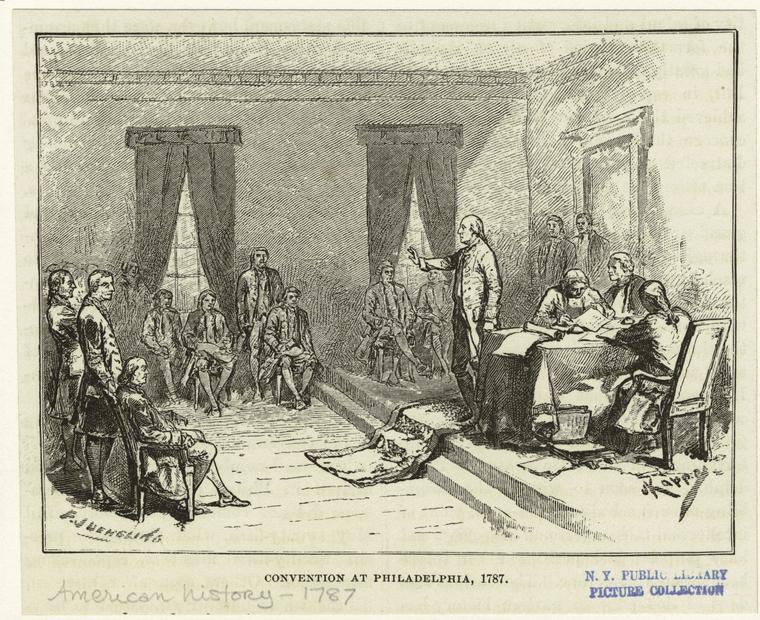
Scholars have long considered—and tried to explain—the complex legacy of the Founding era. Most recently, historians have tried to discern whether the Founding was an “antislavery” or “proslavery” moment. Those who have described the Founding in antislavery terms have delineated a narrative of the gradual expansion of rights between the
American Revolution and Reconstruction that culminated in the inclusion of African Americans as equal citizens and in the fulfillment of the
Declaration’s original promise (Wilentz, 2019; Foner, 2019; Oakes, 2021; Masur, 2021). By contrast, those scholars who have identified the Founding as “proslavery,” have articulated a different story, one that portends the expansion and entrenchment of race-based chattel slavery and the dismal failure of equal rights (Waldstreicher, 2010; Kendi, 2016).
Perhaps unsurprisingly, understanding the original intent of the Framers of the
U.S. Constitution—as a proslavery or antislavery document—has played a critical role in this debate. As Ibram X. Kendi has argued, the federal compromise “enshrined the power of slaveholders and racist ideas in the nation’s founding document.” Likewise, David Waldstreicher has maintained that the Framers created “a proslavery document, in intention and effect.” On the other hand, Sean Wilentz has asserted that delegates explicitly refused to acknowledge slavery’s legitimacy, or “property in man,” enabling them to exclude slavery from federal law and set the stage for antislavery constitutionalism.
Some of the inclination to view the U.S. Constitution through the lens of a binary—proslavery vs. antislavery or Northern vs. Southern—originated at the Constitutional Convention itself. “It seems now to be pretty well understood that the real difference of interests lies not between the large and small but between the northern and southern states,”
James Madison concluded in 1787. “The institution of slavery and its consequences form the line of discrimination.” Yet Madison’s “line” obfuscated the real issue at hand at the Convention—creating a continental “union” that guaranteed the protection of
property rights, including federal recognition of those rights—both citizenship and slavery—across jurisdictional boundaries (Van Cleve, 2010).
This did not seem like such a far-fetched idea in 1787, when every U.S. state contained slaves. Much emphasis has been placed on the fact that about half—25 of 55 delegates at the 1787 Convention—owned enslaved people, and that an array of Northern states had already ended bondage. To be sure, during the American Revolution, several states—Vermont (1777), Massachusetts (1780), and New Hampshire (1783)—had abolished slavery in new state constitutions, though the federal census revealed slaves within New England until at least 1800. All other Northern states—Pennsylvania (1780), Connecticut (1784), Rhode Island (1784), New York (1799), New Jersey (1804)—only pledged to end slavery gradually through state statutes. This meant that bondage did not actually end in the “free states” until between 1827 and 1850. Thus, in 1787, Northern states hardly constituted a “zone of freedom”—most were slave jurisdictions, and would remain so for decades to come.
Still, the creation of future antislavery jurisdictions in the U.S. seemed to portend a heterogenous federal system that presented significant risk to enslavers. Anglo-American owners of human property had seen this before—
Somerset v. Stewart (1772), which decreed that “slavery is so odious, that nothing can be suffered to support it, but positive law,” transformed the British Empire where slavery was concerned: it was legal in some places—the British West Indies—and not in others—England. American enslavers took note, and protection of slave property regardless of jurisdictional differences became a primary condition of consent to join the union in 1787 (Van Cleve, 2010).
Slaveholders saw the writing on the wall in mainland America in 1780, when Pennsylvania enacted a gradual emancipation law that regulated both abolition and slaveholders. Though the children of enslaved people would be freed at age 28, owners of human beings were more concerned with two other stipulations: the importation of enslaved people into Pennsylvania became illegal, and non-residents of Pennsylvania could not keep enslaved people in the state for more than six months. An additional amendment soon rolled down the pike: Pennsylvania enslavers could not sell pregnant African American slaves outside of the state and slaves brought into Pennsylvania by new permanent settlers were immediately deemed free. For enslavers, emerging jurisdictional differences—such as between Pennsylvania and Maryland—hinted at how the federal union could deprive them of their valuable human chattel.
The novel approach of proslavery delegates at the 1787 Convention was to turn the Somerset decision on its head—the status of an enslaved person no longer depended on the jurisdiction where that person was found, but rather on where that person originated. Linking status to origin allowed enslavers’ to imagine the U.S. federal union as a rapidly expanding system wherein slave property and the free movement of that property were safeguarded by law. Slaves’ origins—and their movement across jurisdictional boundaries—played key roles in both the slave trade clause and fugitive slave clause that delegates debated at the 1787 convention (Horowitz, 1970).
An array of seemingly antislavery and proslavery positions were staked out when delegates debated the slave trade in August of 1787. Luther Martin of Maryland asserted that the traffic “weakened” the union and was “inconsistent with the principles of the Revolution, and dishonorable to the American character.” Oliver Ellsworth of Connecticut thought that the “morality or wisdom of slavery are considerations belonging to the States themselves.” John Langdon of New Hampshire, on the other hand, was “strenuous for giving the power [to regulate the slave trade] to the General Government,” as he could not “leave it with the States, who could then go on with the traffic, without being restrained.” But General Charles Pinckney of South Carolina drew a line in the sand, saying that “South Carolina and Georgia cannot do without slaves.”
That delegates defined enslaved people as “foreign” captives brought into the United States from Africa was critical to placing the trade—and its future abolition in 1808—under federal authority, thus dealing an apparent blow to South Carolina and Georgia slave owners. But creating a “foreign” trade also opened the door to a separate “domestic” trade in enslaved people. During the debate, Ellsworth, who “had never owned a slave,” sketched out the process by which a “foreign” trade with Africa might be superseded by a “domestic” trade between Upper and Lower South states. “As slaves multiply so fast in Virginia and Maryland that it is cheaper to raise than import them, whilst in the sickly rice swamps foreign supplies are necessary,” he noted, foreshadowing a commerce in enslaved people within the federal union. The clause’s focus on slaves’ origin also juxtaposed American-born and African-born slaves. This had important implications for western expansion—new territories and states increasingly permitted the immigration of “bona fide” settlers and their creolized slaves, but not traders and “foreign” slaves (Hammond, 2007).
Barely a month before the delegates assembled at Philadelphia, the establishment of a new antislavery jurisdiction, the Northwest Territory, shaped discussions about fugitive slaves. Article IV of the
Northwest Ordinance outlawed slavery—“there shall be neither slavery nor involuntary servitude”—while also protecting slaveholders’ property within that zone of freedom—“such fugitive may be lawfully reclaimed, and conveyed.” At the Convention, South Carolinian General Charles Pinckney and Virginian
George Mason hoped that a provision for protecting the movement of property (especially in slaves) across state lines might be included in the new Privileges and Immunities clause, though it was not. Pinckney, along with fellow delegate Pierce Butler, eyed the Extradition clause instead, proposing “slaves and servants to be delivered up like criminals.”
But two delegates opposed Butler’s amendment. Roger Sherman of Connecticut “saw no more propriety in the public seizing and surrendering a slave or servant than a horse.” Likewise,
James Wilson of Pennsylvania thought that the South Carolinians’ rider “would oblige the Executive of the State to do it at the public expense.” Faced with concerns over the role of the “public” in slave reclamation, Butler withdrew his proviso, opting for a different approach. Like the fugitives-from-justice clause, Butler’s new amendment hinged on the jurisdiction of origin. A person charged with “Treason, Felony, or other Crime” could not escape to safety in another state; s/he would be extradited to “the State having jurisdiction of the Crime.” Likewise, Butler proposed that “if any person bound to service or labor in any of the United States, shall escape into another State,” they would not be “discharged” from bondage but would rather be returned to an owner.
Though later edited out, Butler’s original phrases, “any person” and “any of the United States,” were critical—their capaciousness reflected Butler’s anxiety about the U.S. as a rapidly changing and dynamic union, one in which new jurisdictions were being added, and existing ones were being fundamentally altered. As Butler was undoubtedly aware, a federal system where slavery was based on local law would always pose a threat to the protection of enslavers’ human property, particularly across borders. At the same time, however, an expanding union of states where the movement of slave property was both surveilled and protected at the federal level offered unprecedented opportunities for the creation of a settlers’ slave empire in the West (Van Cleve, 2010; Onuf, 2014).
As the Convention debates over the “foreign” slave trade and fugitive slaves made clear, the real issue at hand was not the antislavery or proslavery intentions of the Framers—it was forging a federal union that secured rights within states as well as across their borders. The same compromise that guaranteed citizenship to “free inhabitants” in any state in the union also guaranteed a right to slave property in any state in the union. Still, delegates faced a huge challenge in securing rights across such varied jurisdictions: free and slave, state and territory. But in 1787, lawmakers intended to correct the problems they had faced under the British Empire: jurisdictional controversies that threatened to undermine—or relinquish—property rights (Greene, 2011). Delegates hoped that a new emphasis on the “origin” of slave property would solve this issue and knit the union together, yet antipathies only intensified in the ensuing decades, culminating in a bloody war over slavery in 1861.
Works Cited:
-Sean Wilentz, No Property in Man: Slavery and Antislavery at the Nation’s Founding (Cambridge, MA: Harvard University Press, 2019).
-Eric Foner, The Second Founding: How the Civil War and Reconstruction Remade the Constitution (New York: W.W. Norton, 2019).
-James Oakes, The Crooked Path to Abolition: Abraham Lincoln and the Antislavery Constitution (New York: W. W. Norton, 2021).
-Kate Masur, Until Justice Be Done: America’s First Civil Rights Movement, from the Revolution to Reconstruction (New York: Norton, 2021).
-David Waldstreicher, Slavery’s Constitution: From Revolution to Ratification (New York: Farrar, Straus, and Giroux, 2010).
-George William Van Cleve, A Slaveholders’ Union: Slavery, Politics, and the Constitution in the Early American Republic (Chicago: University of Chicago Press, 2010).
-Harold Horowitz, “Choice of Law Decisions Involving Slavery: ‘Interest Analysis’ in the Early Nineteenth Century,” UCLA Law Review 17 (1970): 587-601.
-Peter S. Onuf, “The Empire of Liberty: Land of the Free and Home of the Slave,” in Andrew Shankman, ed., The World of the Revolutionary American Republic: Land, Labor, and the Conflict for a Continent (New York: Routledge, 2014): 195-217.
-John Craig Hammond, Slavery, Freedom, and Expansion in the Early American West (Charlottesville, VA: University of Virginia Press, 2007).
-Jack P. Greene, The Constitutional Origins of the American Revolution (New York: Cambridge University Press, 2011).

